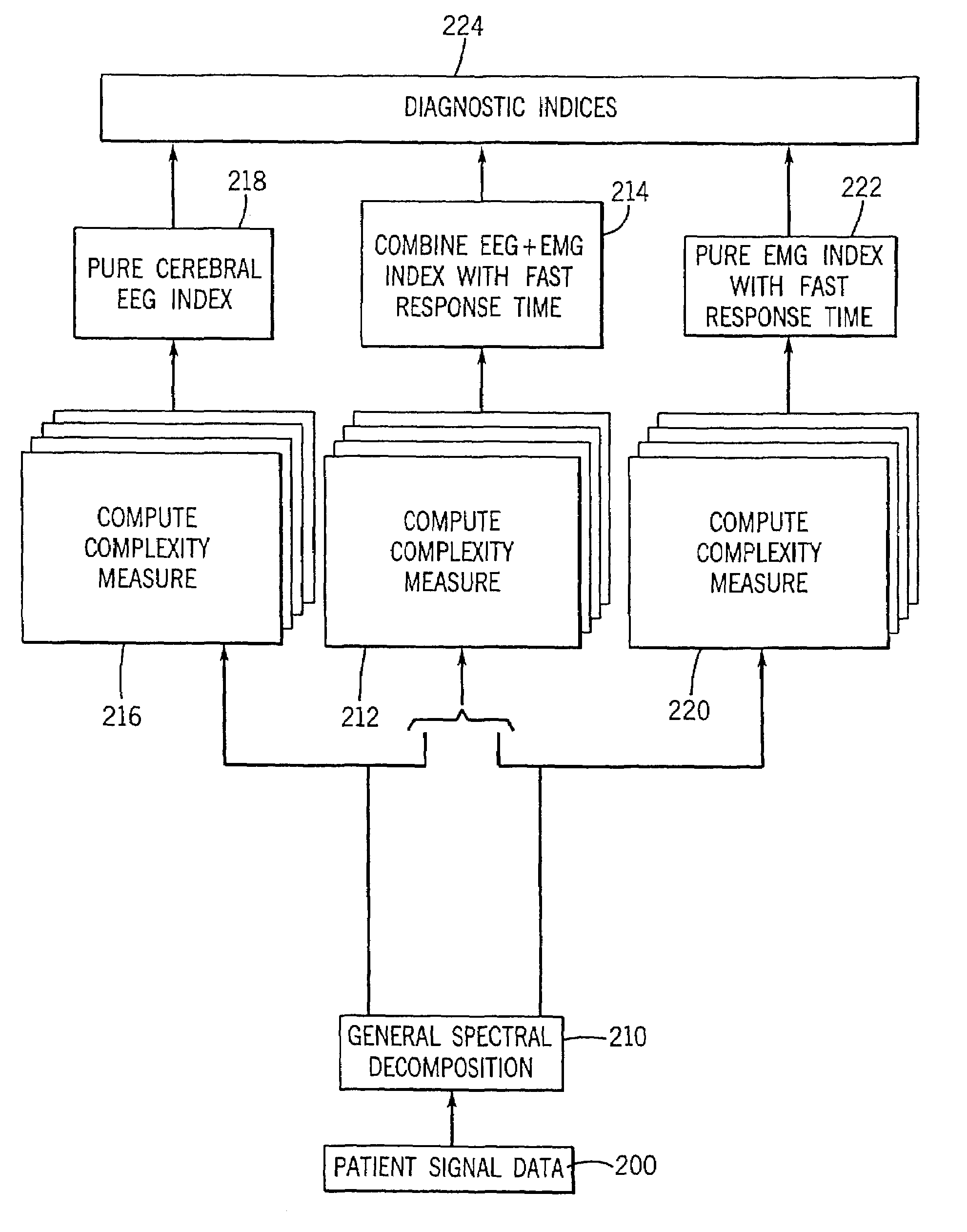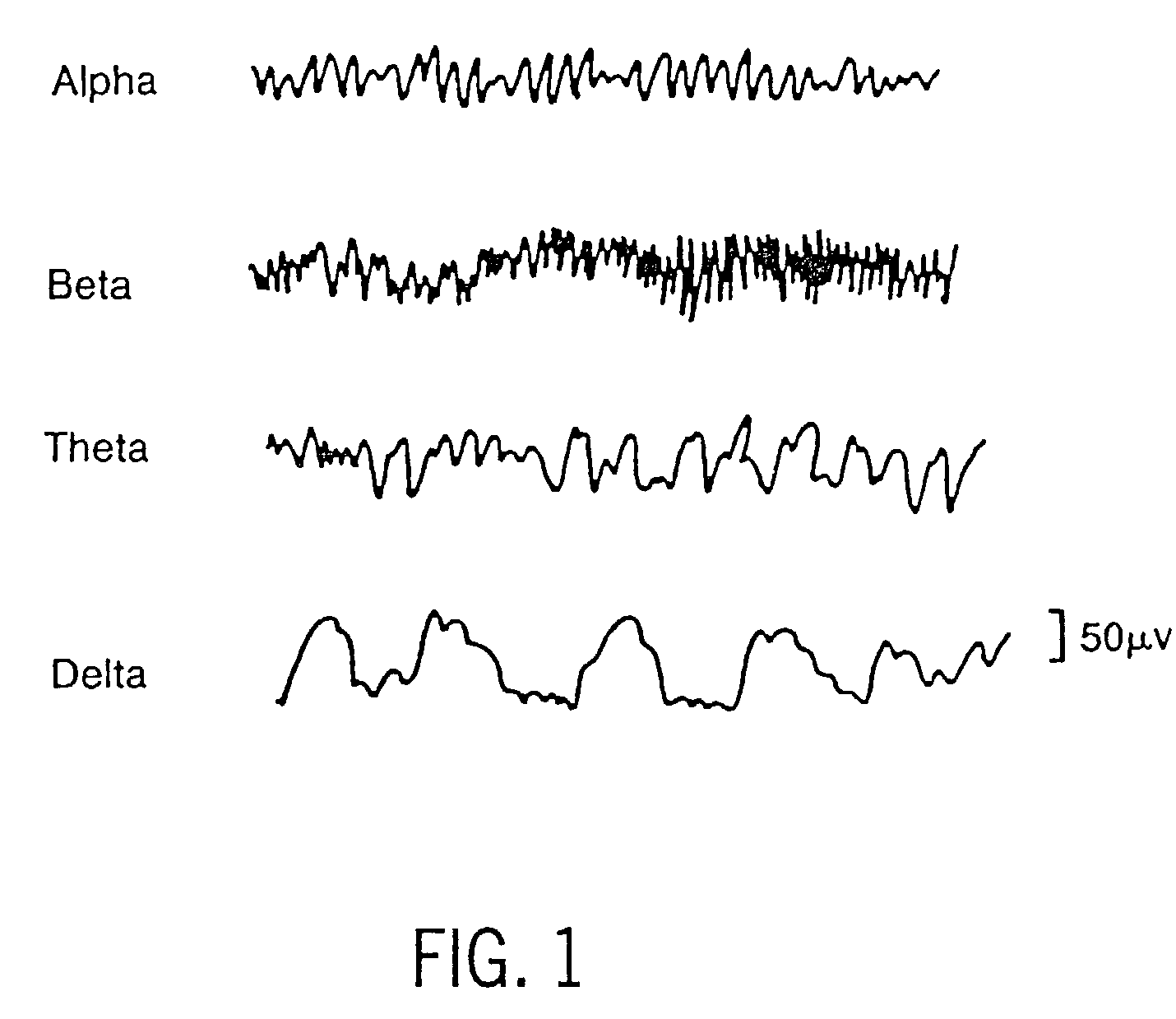Method and apparatus for determining the cerebral state of a patient with fast response
a technology fast response, which is applied in the field of method and apparatus for can solve the problems of excessive deep anesthesia, unfavorable patient recovery, and inability to accurately determine etc., and achieve the effect of accurately determining the cerebral state of a patien
- Summary
- Abstract
- Description
- Claims
- Application Information
AI Technical Summary
Benefits of technology
Problems solved by technology
Method used
Image
Examples
first embodiment
[0097]In providing an entropy based indicator obtained from a frequency range containing both EEG and EMG spectra, it is to be appreciated that this represents a departure from the customary expression of, particularly, EMG signal data. That is, as noted above in connection with the present invention, EMG signal characteristics are customarily expressed as a voltage amplitude, for example as a root mean squared spectral amplitude, and the amplitude of the voltage will vary as a result of variations in the EMG signal data. By contrast, EEG entropy is a dimensionless quantity which describes the amount of disorder in the signal. When viewed from the entropic standpoint, the effect of EMG activity on the EEG signal is to create high frequency noise which increases the entropy of the combined signal. Entropy varies from 0 to 1, and the values are independent of the amplitude of the signal. The entropic expression of EEG signal data and the amplitude expression of the EMG signal data thu...
second embodiment
[0099]the invention is explained using a frequency range of 0.5 Hz to about 150 Hz. It is deemed preferable to divide the extended frequency range into three-bands: a 0.5–47 Hz band; a 63–97 Hz band; and a 123–147 Hz band. The range is divided into the three bands at these frequencies in order to avoid the power line harmonics at 50 / 100 Hz or 60 / 120 Hz depending on the frequency of the alternating current power mains. The lowest band contains most of the EEG components, while the two upper bands include primarily EMG activity.
[0100]FIG. 8 is a flow chart showing the steps of producing an improved diagnostic indication or index using a widened frequency range for the computation of spectral entropy in accordance with the second embodiment of the present invention. In step 200, the signal data corresponding to the biopotential signals appearing in the electrodes placed on the scalp of the patient is obtained. In step 210, the signal data is subjected to spectral decomposition, as by u...
PUM
 Login to View More
Login to View More Abstract
Description
Claims
Application Information
 Login to View More
Login to View More - R&D
- Intellectual Property
- Life Sciences
- Materials
- Tech Scout
- Unparalleled Data Quality
- Higher Quality Content
- 60% Fewer Hallucinations
Browse by: Latest US Patents, China's latest patents, Technical Efficacy Thesaurus, Application Domain, Technology Topic, Popular Technical Reports.
© 2025 PatSnap. All rights reserved.Legal|Privacy policy|Modern Slavery Act Transparency Statement|Sitemap|About US| Contact US: help@patsnap.com



